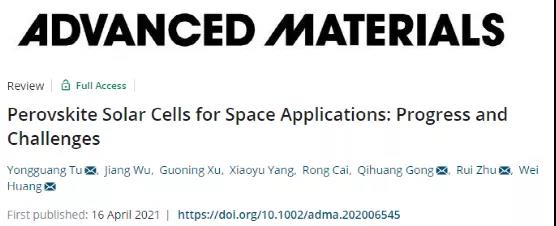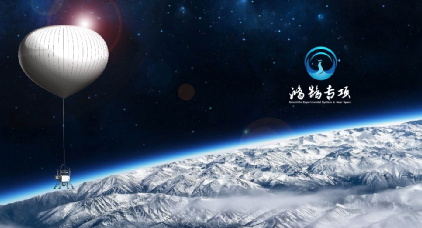
hotline:
17715390137
Tel/Wechat:
18101240246 (Technology)
0512-68565571
Email:mxenes@163.com (Sales Engineer)bkxc.bonnie@gmail.com
Scan the code to follow or search the official account on WeChat:
2D Materials Fronrier After paying attention,
click on the lower right corner to contact us,
Enter enterprise WeChat.
Professional Services Online


Author: painted with broad, Wu Jiang, Xu Guoning
Corresponding author: Huang Wei, Zhu Rui, Huang Qi Gong, painted with broad
Correspondence Unit: Northwestern Polytechnical University, Peking University
Recently, a three-university (academy) joint research team composed of Academician Huang Wei and Associate Professor Tu Yongguang of Northwestern Polytechnical University, Academician Gong Qihuang of Peking University, Researcher Zhu Rui, and Researcher Xu Guoning of the Institute of Aerospace Information Innovation of the Chinese Academy of Sciences, systematically summarized The stability of perovskite solar cells under a variety of extreme environmental factors in space (including electron radiation, proton radiation, ultraviolet radiation, gamma radiation, high vacuum illumination, high and low temperature cycles, etc.) and space flight test missions, discuss The challenges faced by perovskite solar cells facing space applications are discussed, and a systematic outlook for this direction is also made. Relevant results were published on Advanced Materials with the title "Perovskite Solar Cells for Space Applications: Progress and Challenges", which took Northwestern Polytechnical University as the first unit.
my countrys "14th Five-Year Plan" outline clearly proposes to strengthen the development of "aerospace science and technology" and other frontier fields of space science and technology. In the field of "aerospace science and technology", it is necessary to vigorously develop space energy technology to ensure the stable, long-lasting and reliable flight of various aviation and spacecraft. As an important energy supply device, solar cells are one of the most commonly used space energy technologies. In recent years, perovskite solar cells have risen rapidly and have now obtained a certified efficiency of 25.5%, which is constantly approaching the highest certified efficiency of heterojunction silicon-based solar cells (26.7%), becoming one of the most promising renewable energy technologies. . Compared with silicon-based and gallium arsenide solar cells, perovskite solar cells have several significant advantages.
First, the cost advantage. The low-cost perovskite material is used as the light-absorbing layer, and its preparation cost is significantly lower than that of crystalline silicon and gallium arsenide.
Second, the advantage of flexibility. Perovskite materials usually exist in the form of thin films with a thickness of sub-micron level in devices, which are suitable for constructing flexible devices, so that the curved surface space of the carrier can be fully utilized.
Third, the advantage of high energy-quality ratio. For flight carriers with limited load capacity, energy devices need to have a higher energy-to-mass ratio. Perovskite solar cells are lighter in weight and higher in energy quality. Studies have shown that it has an ultra-high energy-to-mass ratio (>20 W/g) that cannot be achieved by other types of solar cells.
Fourth, the anti-radiation potential. According to reports, the perovskite semiconductor exhibits better radiation resistance than glass after continuous radiation of 2.3 Mrad gamma (γ) rays for 1535 hours.
Based on the above advantages, perovskite solar cells are expected to develop into a new generation of space photovoltaic technology.

(Various aviation and spacecraft powered by solar cells, as well as the main factors affecting the performance of perovskite solar cells in the space environment)
Humans have developed a variety of aviation and aerospace vehicles for exploring and cognizing space. Most of these aircraft use solar cell technology to provide a steady stream of power for their normal operation. Typical representatives mainly include solar-powered aircraft, stratospheric airships, International Space Station, geostationary satellites, and "Tianwen-1" Mars probe. The space environment is different from the ground environment, which has obvious extreme environmental factors. Taking a space 35 kilometers above the ground as an example, it has the following characteristics:
First, high vacuum. The atmosphere here is thin, with a pressure of 574.59 Pa (based on US standard atmospheric data in 1976);
Second, strong ultraviolet sunlight. The water vapor content here is almost zero, and the ozone content that can absorb ultraviolet rays is scarce, which eventually leads to the solar radiation intensity as high as 136.7mW/cm2 and the ultraviolet portion with higher intensity;
Third, extreme temperatures. The temperature of this airspace can drop to -60~-35℃, and at the same time, strong thermal radiation and weak thermal convection will cause the aircraft and its load to withstand a wide range of temperature differences;
Fourth, high-energy particle radiation. There are also high-energy particle rays (such as electrons, protons, and gamma rays) produced by cosmic rays and solar flares in space.
This extreme near-space environment poses new challenges to the stability of perovskite solar cells. Facing the extreme environment in space, space photovoltaic technology must have high photoelectric conversion efficiency, high energy-to-mass ratio and long-term stability. Compared with mature crystalline silicon and gallium arsenide solar cells, perovskite solar cells have obvious advantages. At the same time, perovskite solar cells need to accelerate their industrialization process.
In the early stage, the joint research team of the three universities (colleges) conducted a solar cell high-altitude scientific balloon calibration test in Inner Mongolia, my country in August 2018. By loading the perovskite solar cell on a high-altitude balloon, the stability of the device in the extreme environment of the adjacent space 35 kilometers from the ground was studied. Finally, the stability data that the device maintains its initial efficiency above 95% under AMO irradiation is obtained. Related results were published in Science China-Physics, Mechanisc&Astronomy (English version of "Science China: Physics, Mechanics, Astronomy").
The calibration method of solar cell high-altitude scientific balloon is one of the internationally used space solar cell calibration methods. An altitude of 35 kilometers and above is a suitable space for calibrating AM0 solar cells, and the state of the calibrated light source is very close to the ideal AM0 state. The Institute of Aerospace Information Innovation of the Chinese Academy of Sciences is the third organization after NASA and the French Space Center to independently carry out the calibration of 35 kilometers high-altitude balloon solar cells. The organization plans to conduct space solar cell calibration tests every year.

(High-altitude balloon calibration platform for solar cells: the picture comes from the Institute of Aerospace Information Innovation, Chinese Academy of Sciences)
The joint research team of the three universities (college) will continue to carry out space-oriented perovskite photovoltaic technology research in basic research, engineering technology and other fields, boost the development of new perovskite photovoltaic technology, and help my countrys development of adjacent space.
references
1. Yongguang Tu, et al. Perovskite Solar Cells for Space Applications: Progress and Challenges. Advanced Materials.
https://onlinelibrary.wiley.com/doi/10.1002/adma.202006545
2. Tu, Y., Xu, G., Yang, X. et al. Mixed-cation perovskite solar cells in space. Sci. China Phys. Mech. Astron. 62, 974221 (2019).
https://link.springer.com/article/10.1007/s11433-019-9356-1

| Reminder: Beijing Beike New Material Technology Co., Ltd. supplies products only for scientific research, not for humans |
| All rights reserved © 2019 beijing beike new material Technology Co., Ltd 京ICP备16054715-2号 |